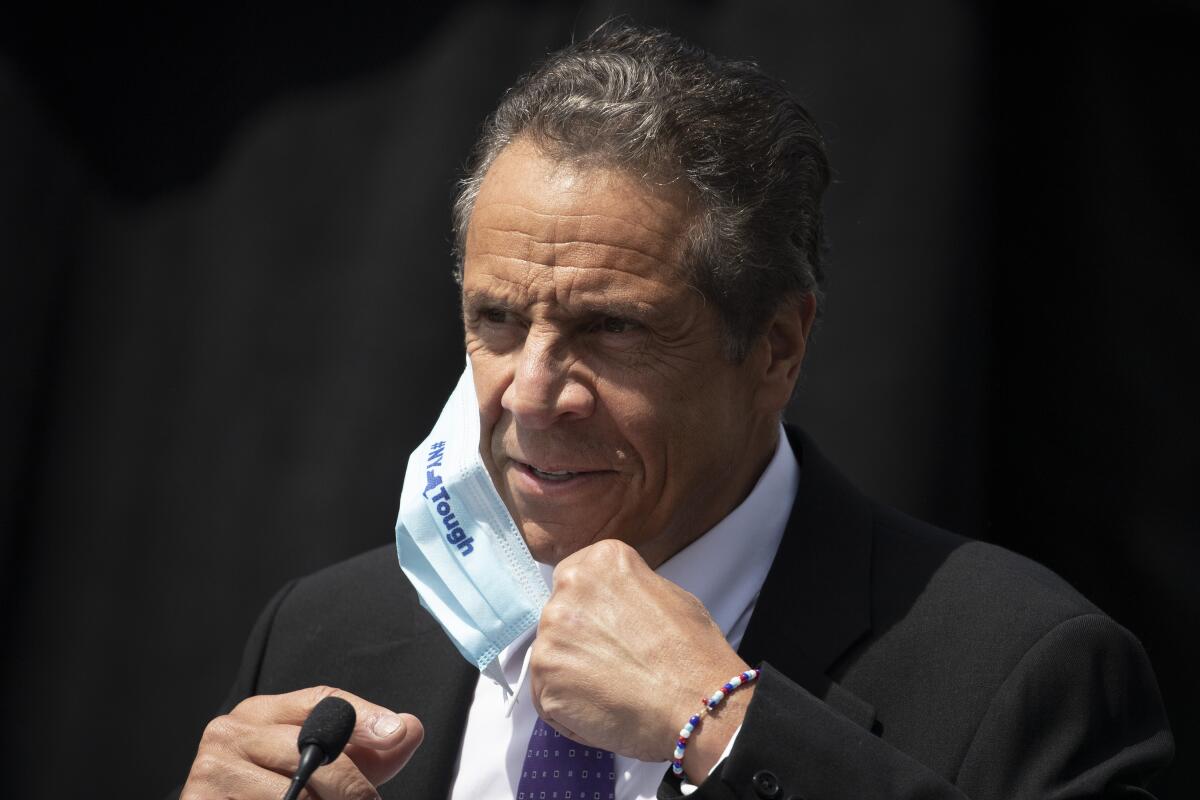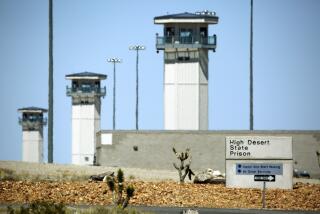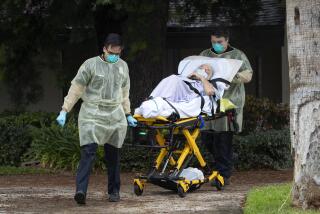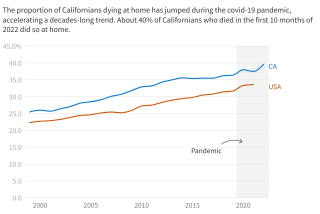New York’s true nursing home coronavirus death toll cloaked in secrecy

- Share via
NEW YORK — Riverdale Nursing Home in the Bronx appears, on paper, to have escaped the worst of the coronavirus crisis, with an official state count of just four deaths in its 146-bed facility.
The truth, according to the home, is far worse: 21 dead, most transported to hospitals before they succumbed.
“It was a cascading effect,” administrator Emil Fuzayov recalled. “One after the other.”
New York’s coronavirus death toll in nursing homes, already among the highest in the nation, could actually be a significant undercount. Unlike every other state with major outbreaks, New York only counts residents who died on nursing home property and not those who were transported to hospitals and died there.
That statistic could add thousands to the state’s official care home death toll of just over 6,600. But so far the administration of Democratic Gov. Andrew Cuomo has refused to divulge the number, leading to speculation the state is manipulating the figures to make it appear it is doing better than other states and to make a tragic situation less dire.
“That’s a problem, bro,” state Sen. Gustavo Rivera, a Democrat, told New York Health Commissioner Howard Zucker during a legislative hearing on nursing homes this month. “It seems, sir, that in this case you are choosing to define it differently so that you can look better.”
How big a difference could it make? Since May, federal regulators have required nursing homes to submit data on coronavirus deaths each week, whether or not residents died in the facility or at a hospital. Because the requirement came after the height of New York’s outbreak, the available data are relatively small. According to the federal data, roughly a fifth of the state’s homes reported resident deaths from early June to mid-July — a tally of 323 dead, 65% higher than the state’s count of 195 during that time period.
Even if half that undercount had held true from the start of the pandemic, that would translate into thousands more nursing home resident deaths than the state has acknowledged.
Another group of numbers also suggests an undercount. State health department surveys show 21,000 nursing home beds are lying empty this year, 13,000 more than expected — an increase of almost double the official state nursing home death tally. While some of that increase can be attributed to fewer new admissions and people pulling their loved ones out, it suggests that many others who aren’t there anymore died.
However flawed New York’s count, Cuomo has not been shy about comparing it to tallies in other states.
Nearly every time Cuomo is questioned about New York’s nursing home death toll, he brushes off criticism as politically motivated and notes that his state’s percentage of nursing home deaths out of its overall COVID-19 death toll is about 20%, far less than Pennsylvania’s 68%, Massachusetts’ 64% and New Jersey’s 44%.
“Look at the basic facts where New York is versus other states,” Cuomo said during a briefing Monday. “You look at where New York is as a percentage of nursing home deaths, it’s all the way at the bottom of the list.”
In another briefing last month, he touted New York’s percentage ranking as 35th in the nation. “Go talk to 34 other states first. Go talk to the Republican states now — Florida, Texas, Arizona — ask them what is happening in nursing homes. It’s all politics.”
Boston University geriatrics expert Thomas Perls said it doesn’t make sense that nursing home resident deaths as a percentage of total deaths in many nearby states are more than triple what was reported in New York.
“Whatever the cause, there is no way New York could be truly at 20%,” Perls said.
A Cuomo spokesman did not respond to repeated requests for comment. New York’s Department of Health said in a statement that it has been a leader in providing facility-specific information on nursing home deaths and “no one has been clearer in personalizing the human cost of the pandemic.”
A running tally by the Associated Press shows that more than 68,600 residents and staff at nursing homes and long-term facilities across the nation have died from the coronarivus, out of more than 164,000 overall deaths.
For all 43 states that break out nursing home data, resident deaths make up 44% of total COVID deaths in their states, according to data from the Kaiser Family Foundation. Assuming the same proportion held in New York, that would translate to more than 11,000 nursing home deaths.
To be sure, comparing coronavirus deaths in nursing homes across states can be difficult because of the differences in how states conduct their counts. New York is among several states that include probable COVID-19 deaths as well as those confirmed by a test. Some states don’t count deaths from homes where fewer than five have died. Others don’t always give precise numbers, providing ranges instead. And all ultimately rely on the nursing homes themselves to provide the raw data.
“Everybody is doing it however they feel like doing it. We don’t have very good data. It’s just all over the place, all over the country,” said Toby Edelman of the Center for Medicare Advocacy, a nonprofit representing nursing home residents.
New York health chief Zucker explained during the legislative hearing that New York only counts deaths on the nursing home property to avoid “double counting” deaths in both the home and the hospital. And while he acknowledged the state keeps a running count of nursing home resident deaths at hospitals, he declined to provide even a rough estimate to lawmakers.
“I will not provide information that I have not ensured is absolutely accurate,” Zucker said. “This is too big an issue and it’s too serious an issue.”
Zucker promised to provide lawmakers the numbers as soon as that double checking is complete. They are still waiting. The AP has also been denied access to similar nursing home death data despite filing a public records request with the state health department nearly three months ago.
Dr. Michael Wasserman, president of the California Assn. of Long Term Care Medicine, said it is unethical of New York to not break out the deaths of nursing home residents at hospitals. “From an epidemiological and scientific perspective, there is absolutely no reason not to count them.”
Nursing homes have become a particular sore point for the Cuomo administration, which has generally received praise for steps that flattened the curve of infections and New York’s highest-in-the-nation 32,787 overall deaths.
A controversial March 25 order to send recovering COVID-19 patients from hospitals into nursing homes that was designed to free up hospital bed space at the height of the pandemic has drawn withering criticism from relatives and patient advocates who contend it accelerated nursing home outbreaks.
Cuomo reversed the order under pressure in early May. And his health department later released an internal report that concluded asymptomatic nursing home staffers were the real spreaders of the virus, not the 6,300 recovering patients released from hospitals into nursing homes.
But epidemiologists and academics derided the study for a flawed methodology that sidestepped key questions and relied on selective stats, including the state’s official death toll figures.
“We’re trying to find out what worked and what didn’t work and that means trying to find patterns,” said Bill Hammond, who works on health policy for the nonprofit Empire Center think tank. “You can’t do that if you have the wrong data.”
More to Read
Sign up for Essential California
The most important California stories and recommendations in your inbox every morning.
You may occasionally receive promotional content from the Los Angeles Times.










